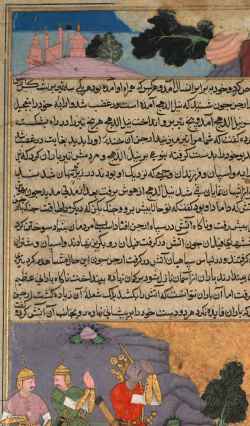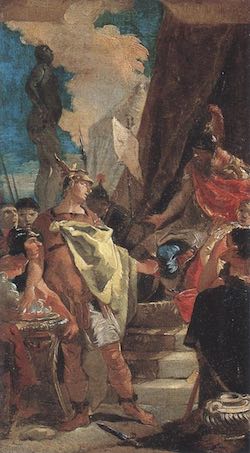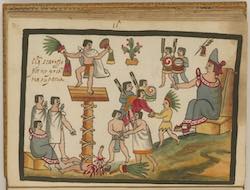Topic: 3. Sacrifice and politics (16th-18th Century)
During the transformative period of the 16th to 18th centuries, the notion of the State evolved into a nearly mystical entity, perceived as immortal and worthy of the ultimate sacrifice. This section delves into the complex interplay between sovereignty, resistance, and sacrifice, a theme explored by early proponents of political tolerance. It also examines revolutionary acts and regicide, viewed through the lens of sacrificial rites. This section includes early modern printed and iconographic sources, along with a comprehensive bibliography from the 19th to 21st centuries, providing a historical and modern perspective on this complex theme
Contesting SacrificeReligion, Nationalism, and Social Thought in France
Chicago: University of Chicago Press, 2002.
Sacrifice, gift and the social logic of Muslim ‘human bombers’
in: Terrorism and Political Violence, v. 15 (2003), issue 3: pp.1-34.
Sacrifice and Martyrdom in the Roman Empire
in: Archivio Di Filosofia [Special issue: Il sacrificio], v. 76 (2008), issue 1: pp.145-154.
2. Sacrifice and religion: Comparisons, Antiquarians, Anthropology (16th-18th Century) 3. Sacrifice and politics (16th-18th Century)
"The First Adventure of the White Horse". The king performed the horse sacrifice in order to determine the extent of his rule. For one year a horse wanders and every land through which the horse passes becomes part of the king’s territory. Arjuna following the horse encountered the son-in-law of the god of fire, Agni, who creates a river of fire to block the warriors. Arjuna pleads with Agni, the god of fire that the horse be allowed to pass, saying that the horse sacrifice is in accordance with sacred Vedic injunctions, and that at the end of the year, the horse will be sacrificed to him, the god of fire himself. (1610-1617)
from: Page from the Khan Khanan's Razm Nama (Book of Wars)
The Cleveland Museum of Art
Ritual Slaughter Issue In Poland: Between Religious Freedom, Legal Order And Economic-Political Interests
in: Religion and Society in Central and Eastern Europe, v. 7 (2014), issue 1: pp.53-69.
in: L’accusa del sangue. Storia politica di un mito antisemita, pp.
Roma: Editori Riuniti, 2002.
Conversion, circumcision, and ritual murder in medieval Europe
: University of Pennsylvania Press, 2020.
Outsourcing Sacrifice: The Labor of Private Military Contractors
in: Yale Journal of Law & the Humanities, v. 21 (2009), issue 1: pp.101-164.
The Mystified War: Regeneration and Sacrifice
in: The Finnish Civil War 1918, pp. 159-200
Leiden: Brill, 2014.
The Sandomierz Paintings of Ritual Murderr as Lieux de Mémoire
in: Ritual Murder in Russia, Eastern Europe, and Beyond: New Histories of an Old Accusation, pp. 253-278
Indiana: Indiana University Press, 2017.
Oliver Cromwell on Horseback (1671)
from: Galardi, Ferdinand de. La tyranie heureuse ou Cromwel politique, avec ses artifices et intrigues dans tout le cours de sa conduite, Leiden, Jean Pauwels, 1671, Frontispice
Rijksmuseum Amsterdam
La methode d’etudier et d’enseigner Chrétiennement et solidement les lettres humaines par rapport aux lettres divines et aux Écritures. Tome II. De l’etude des poëtes, où les divinitez de la fable sont rapportées à l’histoire de l’Ecriture, ou à l’histoire profane, ou àl’histoire naturelle
Paris: François Muguet, 1682.
Passio Beati Simonis pueri
Nürnberg: Friedrich Creussner, 1475.
Mucius Scaevola in the Presence of Porsenna (1726 - 1729)
Musée Magnin, Dijon
An Aztec Noble’s Sacrifice for his Country [1585]
from: Codex Ramírez or Tovar - Relación del origen de los indios que hábitan esta Nueva España según sus Historias
John Carter Brown Library




